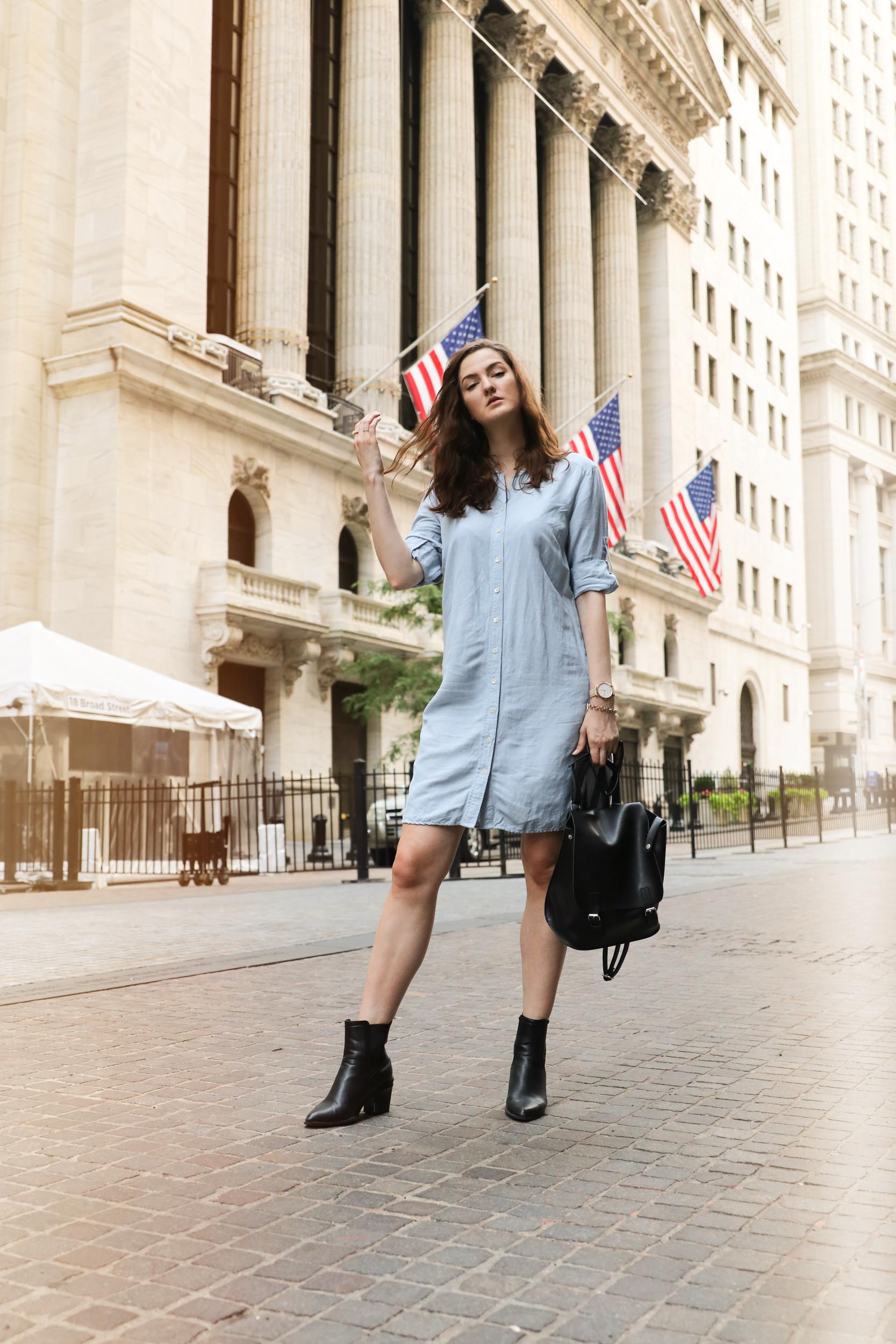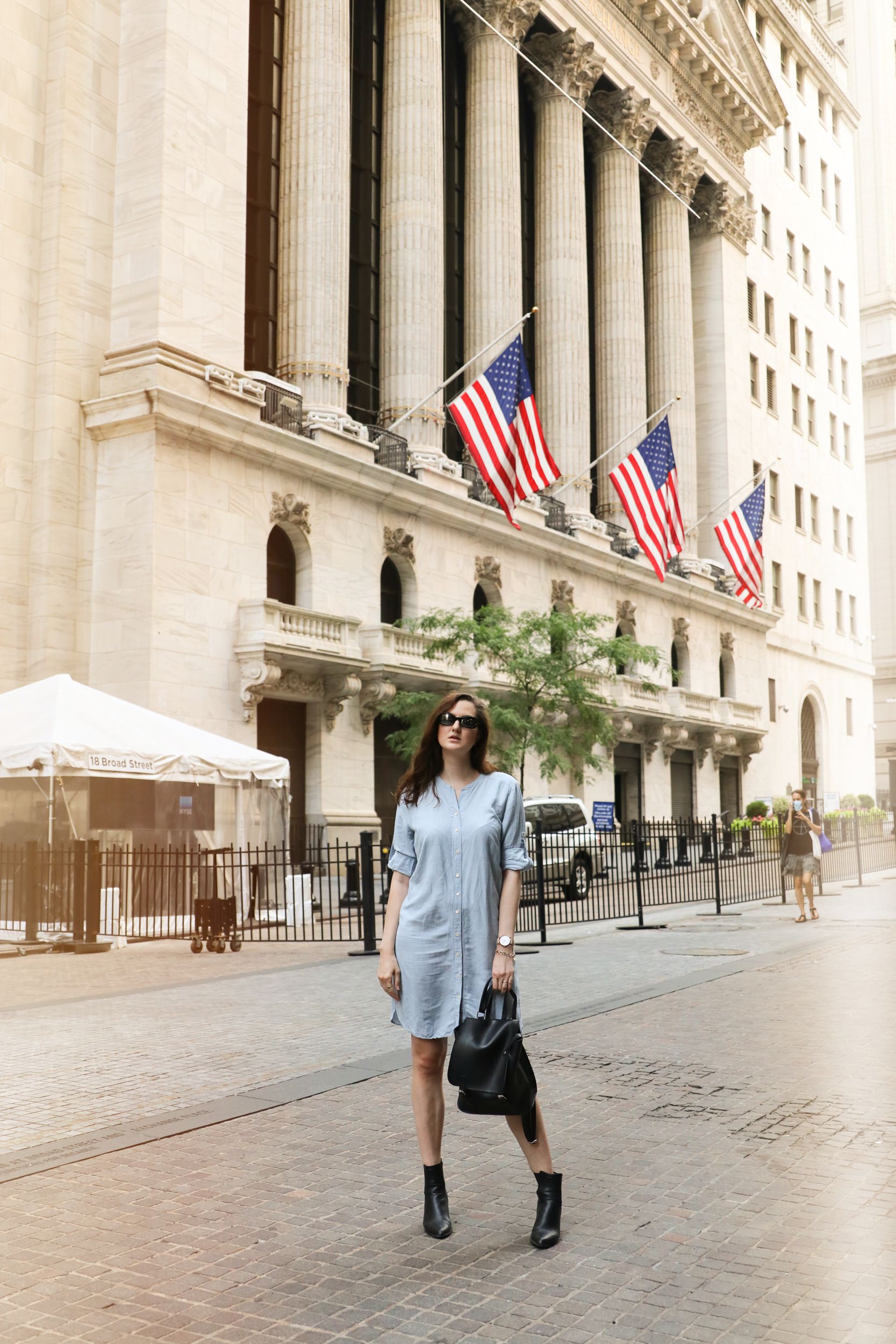Slowly coming out of the lockdown, our lives are starting to resemble some kind of a version of the new normal and with occasion-oriented fashion shopping on the downfall (I mean, where are you planning to travel now, really…) + impulse purchases and shopping trips completely impossible, I started to wonder at what rate we’re going to start consuming fashion, whether fast fashion can still survive the pandemic and what might these few months of the quarantine mean for the industry as a whole.
My initial assumption is that people still have the urge to purchase clothing, even without having any occasion to wear it to. Brands haven’t exactly stopped their advertising tactics and you favorite bloggers are still trying to sell you crop tops on Instagram, so you’re pushing back on major influence to buy even during this pandemic (if you want to read a little more about the role marketing plays in the fashion industry, check out my last post).
Now, I hope this situation pushes the world to embrace ethical production and mindful consumption, force us to reevaluate our budgets (especially on non-necessities like fast fashion) and propels small sustainable fashion brands to the forefront of the industry. There is, however, a chance this theory backfires, apparel brands scramble to open physical stores and fill them with overproduced low-quality merchandise and fast online retailers rise to the top… but lets hope not.




Trends in consumerism in the U.S. right now include 30-50% less intent to purchase apparel (at least in late June) and 40% increase in consumer mindfulness when making an investment, which is great news. At the same time, economy is a complete disaster right now, so there is also a 31% U.S. increase in the desire to purchase less expensive products, which can essentially lead to more frequent purchasing of fast fashion. About a 15-30% increase Is predicted in online shopping, which can also be added to the “bad news” column because online retailers like Missguided, Zaful and Fashion Nova that already heavily operate online and rely on social media advertising have an opportunity to thrive further. These are, in my opinion, the absolute dumpster fire of fast fashion brands, not only from the ethics and sustainability perspective, but also based on quality and style. However, the online thrifting marketplace is also gaining major traction at this time, so that is another check in our “good news” section. More information as you scroll down
In conclusion, I know we hate this word right now, but the future of fashion is unpredictable. There is definitely an evident shift towards radical transparency, sustainability practices and decrease in production, and I can only hope the industry maintains this momentum. Speaking of production though…
Read more about global trends in consumerism in this McKinsey & Co. post.





This is probably a good spot to tell you about what #PayUp is and how fast fashion brands panicked in March of this year and canceled ongoing production orders… without paying the workers. Since re/Make launched a global petition calling all retail brands to pay (mostly female) workers for the inventory that has already been produced prior to lockdown, 19 brands committed to do so, while 17 others have not. Here you can keep track of the brands that have not done so and read more about the crisis and here you can sign a petition to force these brands to pay what they are obligated to pay. The fast fashion industry is already notorious for outsourcing production to factories with high risks of human rights violations, unsafe conditions and unbelievably low salaries, so heres yet another reason not to support them with your purchases.




Along with an increase in the need to purchase cheaper items, there has also been a huge increase in secondhand shopping. ThredUp reports a prediction of the secondhand market growing up to $64 billion from the $28 billion it was at in 2019. Online secondhand shopping is even expected to increase by 69% in 2021, while online retail as a whole is expected to shrink by 15%.
Here are my favorite online places to thrift:



Let’s start a conversation. Tell me a little about yourself and what you thought about the post!
I approach this blog as a diary – taking you on my honest sustainable fashion & lifestyle journey, with sustainability aspects I slowly adopt, struggle with and feel passionate about. I’m building INNABOSE.COM to be an informative, visual & creative resource inspiring even the smallest changes in the world.
GENERAL BLOGGING TOPICS YOU’LL FIND HERE INCLUDE
#sustainablefashion
I’m also a Ukrainian New Yorker – having strong pride and patriotism for both: my homeland 

February 24, 2022 – my digital space shifted to include information about russia’s war on Ukraine, the devastation and destruction my home country is dealing with and the bravery, strength and inspiring spirit they are facing it with. A large portion of my posts today highlight Ukrainian brands, fashion, culture & the strong, incredible Ukrainians making gorgeous clothes you can buy & support local businesses, economy & people fighting for freedom every day. We are also a community who donates to Ukrainian organizations found in any of my recent posts!
#standwithukraine
Inna Bose